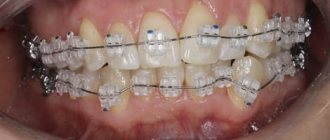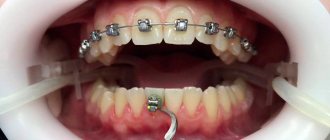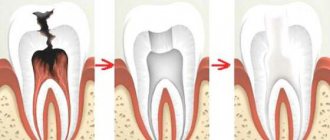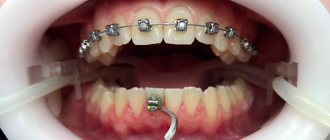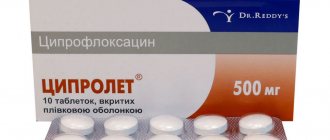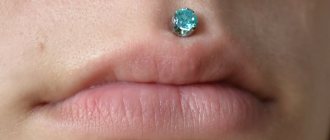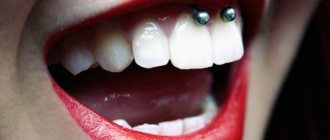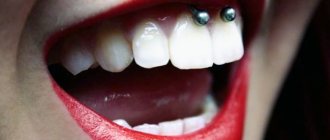Oral piercing does not go out of fashion - it is worn by both teenagers and young adults, mainly between the ages of 14 and 25. This, of course, is beautiful and poses a certain challenge to formal rules of decency - but, as dentists from the University of Buffalo (USA) recently proved, it is completely unsafe from the point of view of dental and oral health.
To support their words, the scientists conducted a series of experiments in which 58 young people with lip or tongue piercings - a ring or a barbell - took part. As a result, it was found that the risk of contracting an infection or dental disease in people with piercings is at least twice as high.
Why? Now let's look at it from the point of view of dentistry.
Where to get a piercing? Is it possible to do a piercing at home?
In order to get professional and high-quality piercings, there are tattoo studios and piercing studios. They have all the necessary conditions for high-quality provision of services, and the craftsmen have the necessary experience and qualifications. Is it possible to do a piercing at home? Theoretically, yes, it is possible, but each puncture has its own nuances - the correct angle of the puncture, location, selection of the length of the jewelry, which are very difficult to observe on your own. Moreover, piercing yourself for the first time can be quite scary; in the end, instead of a beautiful and even puncture, you only injure yourself. We advise you not to carry out such experiments, but to contact a piercer . There is also an opinion that such procedures should be performed by a doctor, but, despite medical education, such specialists do not have the appropriate knowledge about piercing, the necessary tools or disposable supplies, as well as suitable jewelry, so medical institutions or beauty salons are not the right place for piercing.
If you're unlucky - inflammation
Unfortunately, with implants you always need to be prepared for problems. Sometimes, despite ideal sterility and compliance with the rules, the wound still becomes inflamed.
If you notice green or brown pus coming out, or the piercing site is hotter than other areas of the skin, the tissue is red and painful, especially if the pain becomes throbbing, visit your doctor immediately. If you start treatment quickly, most likely it will be enough:
- problem after piercing
to remove jewelry; - wash the puncture with an aqueous solution of chlorhexidine, furatsilin or peroxide (not alcohol solutions);
- take an antibiotic.
If you delay going to the doctor, you may need to open up the source of inflammation, and a noticeable scar may remain. It’s even worse if a large abscess breaks open on its own - then you get the most unsightly, rough scars. And it’s really bad if the abscess does not open - then a bacterial infection can cause blood poisoning, and this is already deadly.
So: pathogenic microorganisms that get into the wound cause various abscesses, which are sometimes very difficult to treat, and the presence of a foreign object in it makes treatment many times more difficult. Therefore, the first rule: in case of any infections, remove the implant. The second rule is that we still go to the doctor.
Is there a risk of contracting hepatitis or HIV?
Do not get piercings in questionable places, at home, in a club, etc. The master must work in disposable, clean gloves, and the instruments must be sterile. If you are worried, the technician can remove tools from an autoclave or ultraviolet cabinet in front of you . If all hygiene standards are followed during the procedure, everything will be fine.
Why complications arise
The reasons for an unsuccessful puncture, depending on who provoked the complications, can be divided into two groups:
- Complications due to the fault of the master. Masters who work at home without the appropriate certificates and permits often make the procedure unsafe: they do not maintain sterility, do not undergo medical examinations, and pierce incorrectly. As a result, an infection enters the wound, and the instrument damages nerves and blood vessels.
- Complications caused by the client. Often clients are not ready for a long recovery period and do not follow the specialist’s recommendations. The wound requires careful, long-term care over several months, and if the wound is not treated or injured, this leads to infection.
Does it hurt to get a piercing?
The pain of the puncture depends on the client’s pain threshold ; for some people, one puncture does not hurt at all, for others it is very unpleasant. But there are punctures that are more painful than others. The most painful piercings are nipple piercings, tragus and medusa . But you shouldn’t be afraid of these punctures; the piercing procedure only takes a couple of seconds. Where doesn't it hurt to get a piercing? The most painless places are conch and helix , but there are still people who find injecting them quite unpleasant. To make the procedure as comfortable and painless for you as possible, we advise you to get a good night's sleep, eat a hearty meal, and before the puncture itself, you can drink tea with something sweet.
What should you think about before getting a piercing?
If you decide to pierce the cartilage in the auricle, you should think about which side you sleep on - you cannot sleep on a fresh puncture for the first 2-3 weeks to avoid injury, so choose the puncture site on the side on which you sleep less. In the case of a tongue piercing, we advise you to choose a day of the session after which you will have a weekend , because the tongue swells greatly after the piercing, and in order for the swelling to subside faster, it is better to refrain from unnecessary conversations as much as possible. It is also undesirable to get a piercing before going on vacation to hot countries ; with a fresh piercing, swimming in open water is prohibited for 3-4 weeks.
Cultural significance
The modern world is rapidly changing before our eyes. Today, a tattoo, a pierced tongue or an eyebrow is no longer perceived as a manifestation of a rebellious spirit, as it was before, in the days of our parents, when earrings were only allowed to be worn in the ears, and then only for girls.. Even our society, which is highly conservative, has become It’s normal to treat such decorations. A person who wants to stand out in this way does not experience discomfort in communicating with others, difficulties in getting a job, etc.
Now piercing is considered commonplace, regardless of the gender of its wearer, social status and place of puncture. Therefore, those who want to decorate their body with earrings should not be afraid that this will be negatively perceived by others.
How to care for your piercing
Caring for your piercing depends on where the piercing is made. But for all punctures, first of all, quality treatment and rest . The best product for caring for piercings is the antiseptic octenisept (or miramistin, but this is a slightly worse option). It is necessary to treat punctures 2 times a day, and do not use cotton swabs or cotton pads . Piercing care in the first days includes complete rest for a fresh piercing, so all punctures made in the auricle, as well as nipple piercings, must be covered with a soft-lined plaster for 2 weeks to prevent injury. If you cannot find a patch of the right size, a sterile napkin with pieces of the patch will do. For 3-4 weeks, avoid steaming the puncture (baths, saunas, hot showers and hot baths are prohibited). After taking a shower, the puncture must be treated. In case of injury and inflammation, apply baneocin ointment 2 times a day, seal ear piercings again, but use the ointment for no more than 5 days. After 2-3 weeks, if necessary, do a planned downsize (replacing the primary decoration with a shorter one). In the case of a tongue or smile piercing, the rules for caring for the piercing are somewhat different. Lakalut, Asepta or President mouth rinses are suitable for treatment use them 4-5 times a day and after each meal. Eliminate from your diet all spicy, salty and too hot foods, as well as soda.
Health Hazard
In addition to aesthetic beauty and self-affirmation, the use of piercings on different parts of the body can have a negative impact and harm on a person’s health. Failure to comply with hygiene standards can lead to the development of an inflammatory process, which, in the absence of proper medical treatment, can lead to the death of adjacent tissues and the development of an abscess.
When performing a lip piercing, the consequences can be very different. It involves constant contact of the open wound and jewelry with food and teeth. It is necessary to pay more careful attention to oral hygiene after each meal, otherwise inflammation may develop. Contact of jewelry with tooth enamel leads to its thinning and tooth defects.
The area of the nasolabial triangle has a large accumulation of blood vessels and nerve endings. In addition, people very often rub this area with their hands.
In this regard, bleeding, inflammation of the facial nerve, the appearance of an allergic or bacterial rash may occur, and there is also a high probability of stomatitis.
Tongue piercing takes a leading place in terms of complications. The consequences of tongue piercing can be very dangerous. An unsuccessful puncture can lead to serious blood loss, which can only be eliminated through surgery. After the puncture, severe swelling and discoloration of the organ are observed.
Itching, pain and burning of varying degrees of intensity will accompany you for a long time. If hygiene standards are violated, purulent discharge and putrid odor from the mouth may appear. One of the consequences is stomatitis and fungal infection of the oral mucosa.
When performing piercing in the eyebrow area, there is a very high risk of damage to the optic nerve, which can lead to loss of visual acuity, drooping of the eyelid, limited field of vision and extensive hemorrhage.
In terms of consequences, the most harmless type is ear piercing. Swelling, purulent discharge, itching and peeling may occur. However, in cases of damage to the facial nerve, it is possible to develop facial asymmetry, loss of sensitivity in certain areas of the skin, as well as uncontrolled lacrimation.
Does the piercing take a long time to heal?
The complete formation of the canal for many punctures takes on average 6-8 months (with the exception of tongue and smile, they heal much faster), but this does not mean that the puncture will hurt throughout this time. If you follow all the recommendations and proper care, the pain goes away after 2-4 weeks.
Rules of asepsis and antisepsis
Puncture of any part of the body must be performed in a salon using a special gun or needle. The procedure is performed by a specially trained master. Piercing on different parts of the face and body can be performed with or without anesthetics. To do this, use gels, creams and sprays based on lidocaine.
After treatment with an anesthetic drug, the site of the future puncture is covered with a film and the required time interval is waited for the drug to take effect.
The procedure is performed very quickly and causes a minimum of pain, acceptable for each area. Before piercing, the surface of the skin is treated with an antiseptic or antibacterial solution. Only disposable needles are used. The package with accessories for performing the procedure must be opened in the presence of the client. Compliance with the rules of asepsis and antisepsis is mandatory, as with any type of surgical intervention.
Read also Causes of vomiting after eating and increased gag reflex
Primary piercing jewelry
It often happens that the client’s request is to immediately place a ring in a fresh puncture. But the primary decoration for piercing is a straight labret or barbell (or a microbanana for piercing the navel, eyebrows, ruuk and day), the only exception is the smile piercing, you can immediately put a ring or circular in it. This is explained by the fact that the labret is much more static; it practically does not move inside the puncture, which reduces the risk of mechanical injury. The carving of jewelry also plays an important role; external threads can injure a puncture and collect a lot of dirt, so it is better to give preference to jewelry with internal threads . The material is also very important; jewelry made of surgical steel, jewelry gold or low-grade silver will not allow punctures to heal properly due to the presence of nickel in its alloy, which oxidizes while in the body. Is titanium suitable for a first piercing? Definitely yes, titanium is one of the most hypoallergenic metals at the moment.
Causes of problems with piercings
The main causes of piercing problems are related to:
- incorrect placement;
- size of decoration;
- infections;
- allergic reactions.
Placing the piercing requires some thought
A well-known rule: carefully choose the place you want to pierce. Of course, beauty comes first ;), but that's not all.
Consider whether the piercing of the chosen location will interfere with everyday life. Replay your normal day in your head and try to imagine everything you do. Take the time to read reviews on the forums. Doesn't it bother you? Then move on.
Anatomy
There should be no large vessels or nerves at the puncture site, especially if it is not a superficial plane piercing. Puncture of a large vessel will lead to at least a large hematoma, and sometimes it is impossible to stop the bleeding without removing the jewelry.
Particular care must be taken in this regard when piercing the tongue - the specialist must be prepared to stop severe bleeding. Ready - this is not a cotton swab with peroxide, but a hemostatic clamp, the ability and determination to use it if it gets too bad!
By the way, for some reason very popular questions are how to pierce your tongue yourself, how to pierce your tongue at home. The best answer here is no. Believe me, this is the worst place for independent experiments. In case of an unsuccessful hit, the chance to help yourself is small.
Placing the product near a major nerve may cause pressure on the nerve, causing discomfort or pain. As a result, it will still not be possible to leave the piercing in this place; you will have to redo it - so why take the risk?
Mobility
But even checking with an anatomical atlas does not guarantee that problems cannot arise suddenly. The first problem is that if a moving part of the body is chosen for the piercing, then the jewelry moves during movements and scratches the surface of your skin, muscles and even bones. This is indicated by reddish skin around the piercing and severe pain. This constant irritation of deep tissues leads to chronic inflammation and scarring. There is no need to endure “until the last.” The best advice is to remove the jewelry to minimize the risk of scarring. Otherwise, the piercing may leave a rough, deep scar, and the jewelry will no longer give you joy and pleasure.
An unsuccessfully chosen puncture site on the tongue can lead to impaired diction or abrasion of tooth enamel by the decoration. Genital piercings can cause problems when having sex or urinating, etc.
Size matters - jewelry of the wrong length or diameter
The product may be too large and begins to stretch or rub the skin too much. Then expect swelling, redness and scarring to appear. Moreover, with such an effect on the walls of the wound canal, the risk of getting an unsightly hypertrophic or keloid scar increases greatly. Remember that no jewelry should be visible through the skin! Always consult a professional to find the optimal diameter and length of your jewelry. It will be better if you start with small pieces of jewelry and gradually move on to larger ones. This way your skin will be ready for further stretching. In any case, remove the jewelry if you feel any discomfort. Don't be patient! You can pierce this part of the skin later.
Infections are the main problem with piercings.
The person piercing you always has contact with your skin, subcutaneous tissue, and sometimes deeper tissues. In any case, this is contact with blood. Piercing infections can be caused by dirty hands, poor skin care, unsterile instruments and jewelry. Of course, it is better if the procedure is performed by a surgeon. Sometimes operating room nurses make very good masters. If it doesn’t work out with the surgeon, make sure that the specialist installing the piercing at least follows simple rules of asepsis.
Purity
The room is clean, the specialist is dressed and looks neat. There are no pets running anywhere, the specialist washes his hands before the procedure, etc. If a place doesn't look clean, it probably isn't. 
Gloves
The specialist must carry out the procedure wearing gloves - and new gloves must be opened in front of you. There are “masters” who have one pair of gloves for the whole day. Drops of blood from one patient can get to the next, and even microparticles containing the AIDS or hepatitis virus are enough for infection. And it is absolutely unacceptable for the procedure to be done without gloves - even if you have washed your hands.
Sterile instruments
If it is a small puncture for which a needle is sufficient, it should be disposable. If you can’t get by with a needle and need something more, don’t be shy to ask where instruments are sterilized. Remember: these tools were used to pierce the skin of another person before you! What if he has hepatitis, AIDS or other unpleasant things? Rubbing with alcohol, ultraviolet or ball sterilizer - do not sterilize!
If they can’t show you a dry-heat oven or an autoclave, feel free to get up and leave
Treatment of the puncture site
Before puncture, the skin area is thoroughly wiped with alcoholic chlorhexidine, betadine or another antiseptic solution intended for treating the surgical field. Aqueous chlorhexidine or peroxide is not enough! Wiping should be thorough, at least 3 times different napkins.
If your tongue and cheeks , you can first rinse your mouth with an aqueous solution of furatsilin or chlorhexidine - just do not swallow
Some surfaces cannot be properly sterilized in a regular treatment room - for example, the inside of the nose. And this greatly increases the risk of infection.
Sterilization of jewelry
Yes, yes, the jewelry is also sterilized before installation. Ideally, it should be in sterile packaging. At worst - long
(at least half an hour) soaking in an antiseptic solution - simply rubbing with alcohol is not enough. Since many pieces of jewelry cannot withstand such harsh liquids, it is best to use a rough, plain piece of surgical steel or titanium for the first installation. When the wound is completely healed, the body will form more or less dense walls around the hole. They will protect the deep tissues of the body and blood from contact with the jewelry. Such sterility as when installing jewelry in a fresh wound will no longer be needed.
If you want to pierce only one ear, for example, and the packaging of the earrings is double, check with the specialist in advance that he will take the earring from a closed, sterile package, and not from one that was previously opened.
How does the puncture procedure work?
First of all, the master helps in selecting jewelry. The decoration and all necessary instruments are sent for sterilization. The technician treats the puncture area with an antiseptic and makes markings. A through puncture is made with a special hollow needle. If required, the fresh piercing is sealed. The master gives recommendations for care. The piercing procedure takes on average 30 minutes, which includes preparing the workplace, sterilizing instruments, marking, etc., but the puncture itself takes only a couple of seconds.
How to avoid complications
To ensure healing is as safe as possible, you must adhere to several rules:
- the procedure should be done in a specialized salon;
- check how well the procedure for sterilization and disinfection of instruments is followed;
- make sure that the master has a certificate of completion of training, a license, and a medical book;
- strictly follow the doctor’s recommendations for caring for a fresh wound;
- Avoid going to the sauna, bathhouse, swimming pool, or the beach for 2-3 months after the procedure.
What complications and consequences can there be after piercing?
If you follow all care recommendations, the likelihood of complications after piercing is very low. Most often, problems in healing arise due to mechanical trauma, that is, if you catch or pull the jewelry, then inflammation of a fresh puncture is inevitable. Complications after piercing can also occur if you have a weakened immune system, or if the piercing was done during a cold. You should do piercing with caution if you have dermatitis, psoriasis, seborrhea, lichen and other skin diseases; it is better to consult a doctor before the procedure, otherwise the consequences of an unsuccessful piercing will take a very long time to heal.
What can happen to the puncture site or tattoo?
Skin, designed to protect us from threats from the outside world, remains a very delicate matter. Injuring it during piercing is fraught with the following consequences:
- allergies to metal or tattoo ink components;
- scar formation;
- sepsis (blood poisoning).
The first case is usually detected some time after the procedure. When faced with symptoms of long healing, swelling or suppuration, do not neglect the help of specialists!
Scarring is possible if you do not properly care for the puncture site or if the technician is careless: in an effort to cope with the injury, the connective tissue grows excessively, forming a scar.
It is impossible to miss blood poisoning - it develops rapidly a few hours after the “operation”. A visitor to a beauty salon finds it difficult to breathe, experiences fever, tachycardia, and sees things that are not what they usually see? An emergency call must be made immediately! The rest is up to the doctors.
The risk of infection is always relevant, even if the piercing or tattoo was done in the most expensive salon in the city. And not only because of the dishonesty of its employees: walking around with damaged skin, you can catch an infection - HIV or hepatitis is unlikely, but tetanus and tuberculosis - easily!
Important! Is the newly opened salon inviting visitors with mega discounts? Don’t rush to become its first clients: the establishment can disappear as quickly as it opens. But the infection will not go away on its own.
Are there any contraindications for piercing?
There are several main contraindications for piercing: Age. How long can you start getting a piercing? By law, piercings can be done from the age of 16 in the presence of a parent or legal guardian. Pregnancy. In the early and late stages, stress during the piercing procedure can affect the course of pregnancy (during lactation you should also refrain from piercing). Heart disease. Before the procedure, you should definitely consult your doctor. Contraindications to piercing can also include chronic skin diseases, kidney failure, cancer, in which case a consultation with a doctor is required.
FAQ
- Are there any contraindications to piercing?
Yes, I have. A puncture cannot be done if you have a number of diseases: diabetes, AIDS and HIV infection, viral hepatitis, herpes, mental disorders, epilepsy, oncology. Also, the procedure is not performed during pregnancy or lactation.
- Which area is the most painful to pierce?
It all depends on the individual pain sensitivity threshold. It is believed that the most severe pain is caused by piercing the nipples, ear and nose cartilage. The least painful puncture is in the earlobe.
- What jewelry material does not cause allergies and complications?
For the initial puncture, jewelry made of safe hypoallergenic titanium, medical steel, polytetrafluoroethylamine (PTE/PTFE), bioflex, and acrylic are recommended.
Share link:
What piercing is in fashion now?
Previously, piercing was considered an attribute of informals, but with the development of the piercing and body modification industry, this opinion has completely changed. Is piercing fashionable? Of course yes! Manufacturers of piercing jewelry create forms of products that look sophisticated, and everyone can find something that will perfectly highlight their individuality. The most fashionable piercing at the moment is the piercing of the wing of the nose and microdermal. These piercings have not lost their popularity for a long time, and are suitable for absolutely everyone. But the fashionable piercing of 2021 is, perhaps, the helix and conch piercing, which look harmonious in any look.
